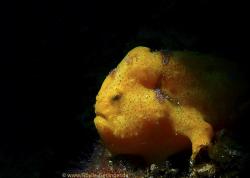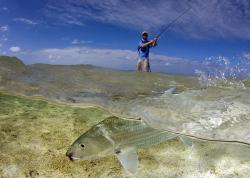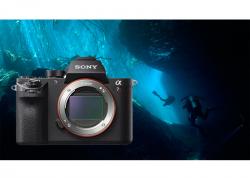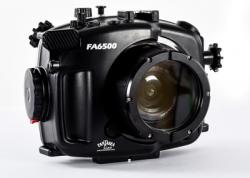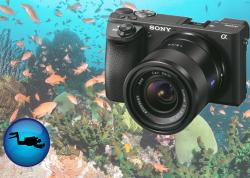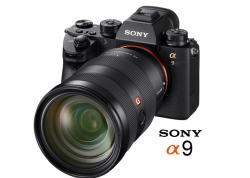Shooting with a Single Strobe
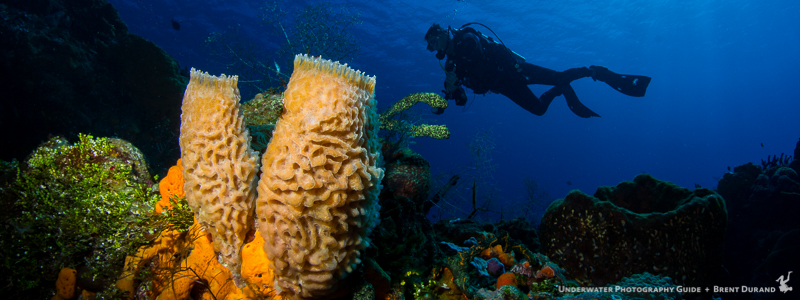
Strobes are a light in the darkness for underwater photography – literally. We learn in open water scuba classes about light falloff (starting with red) as we descend in the water column. We also know that the water itself gets darker as we descend, especially when visibility is less than 30ft (10m), when clouds block the sun or (obviously) at night. Using a strobe will bring not only light, but also vivid color and contrast back into the scene.
There are a number of strobes and strobe manufacturers on the market, each with different pros and cons. The vast majority will attach to camera housings via fiber optic cables or sync cords. Both of these connections serve to relay the flash signal (via light or electric signal) that tells the strobe to fire.
Most new underwater photographers start with a single strobe. Shooting with a single strobe means less weight and bulk on the camera rig, less task loading during the dive and a much better opportunity to learn how to use a strobe before handling two of them.
Single Strobe Positioning
Before positioning a strobe, the diver must decide how he or she would like to compose the photo. This includes any background and mid-ground elements, direction of the ambient (sun) light, secondary subjects or simply eye contact with a macro subject. Once this has been determined, the diver should adjust camera settings and only then move in for the shot. Below are a few strobe positions and photos showing the effects of light and shadow.
Overhead light
Placing a single strobe above and in the direction of the subject is a great option for macro photography as well as shooting large fish or mammals. It's essential to aim the strobe so that the corner of the beam touches the scene in order to reduce backscatter. This will also help prevent the photographer from placing the strobe right in front of the subject, and create shadows similar to those we see outside in the sun – a very natural look.

Side Lighting
Placing a single strobe to the side of a subject creates an artistic lighting effect, resulting in a well lit and a shadowy side of the subject. These photos are edgy and can be used really nicely in portraits.

Spotlight Effect
A single strobe can be positioned to bring color back into an interesting subject in a wide-angle scene. The position of the subject within the composition will determine where to place the strobe to create the best angle of light.

TTL or Manual ?
Many underwater housing and strobe combinations allow photographers to use their strobe in manual or TTL (automatic) mode. Most experienced underwater photographers shooting two strobes gravitate to manual settings as they know what strobe power they want to use with varying subjects, shooting conditions and stops of light added/lost when changing camera settings.
Those who don’t have this experience will opt for using their strobes in TTL mode. Sealife, Ikelite, Sea & Sea and other manufacturers allow use of TTL, where the camera sends out a very small pre-flash to meter light in the scene before triggering the full flash at appropriate power.
Shooting a strobe in TTL is very reliable for macro photography, where focusing distance and light do not change much. It is also reliable in close-focus wide-angle photography for the same reasons. TTL's weakness is with fast moving subjects that move towards or away from the camera. Playful sea lions and fast schools of fish are perfect examples.
So should you shoot in TTL? Certainly. These days it’s easy to switch between TTL and manual strobe settings, so try both, experiment, and find a shooting style that works for you.

Conclusion
Shooting with a single strobe will bring a world of color into the photos of those not currently using a strobe, as well as some very artistic lighting for even the most experienced underwater photographers. Positioning and using the strobe is very easy and the results are incredible. Happy shooting!
Interested in a strobe? Call the team at Bluewater Photo to learn about the perfect strobe for you.
Further Reading
RECOMMENDED ARTICLES
SUPPORT THE UNDERWATER PHOTOGRAPHY GUIDE:
The Best Service & Prices on u/w Photo Gear
 Visit Bluewater Photo & Video for all your underwater photography and video gear. Click, or call the team at (310) 633-5052 for expert advice!
Visit Bluewater Photo & Video for all your underwater photography and video gear. Click, or call the team at (310) 633-5052 for expert advice!
The Best Pricing, Service & Expert Advice to Book your Dive Trips
 Bluewater Travel is your full-service scuba travel agency. Let our expert advisers plan and book your next dive vacation. Run by divers, for divers.
Bluewater Travel is your full-service scuba travel agency. Let our expert advisers plan and book your next dive vacation. Run by divers, for divers.




